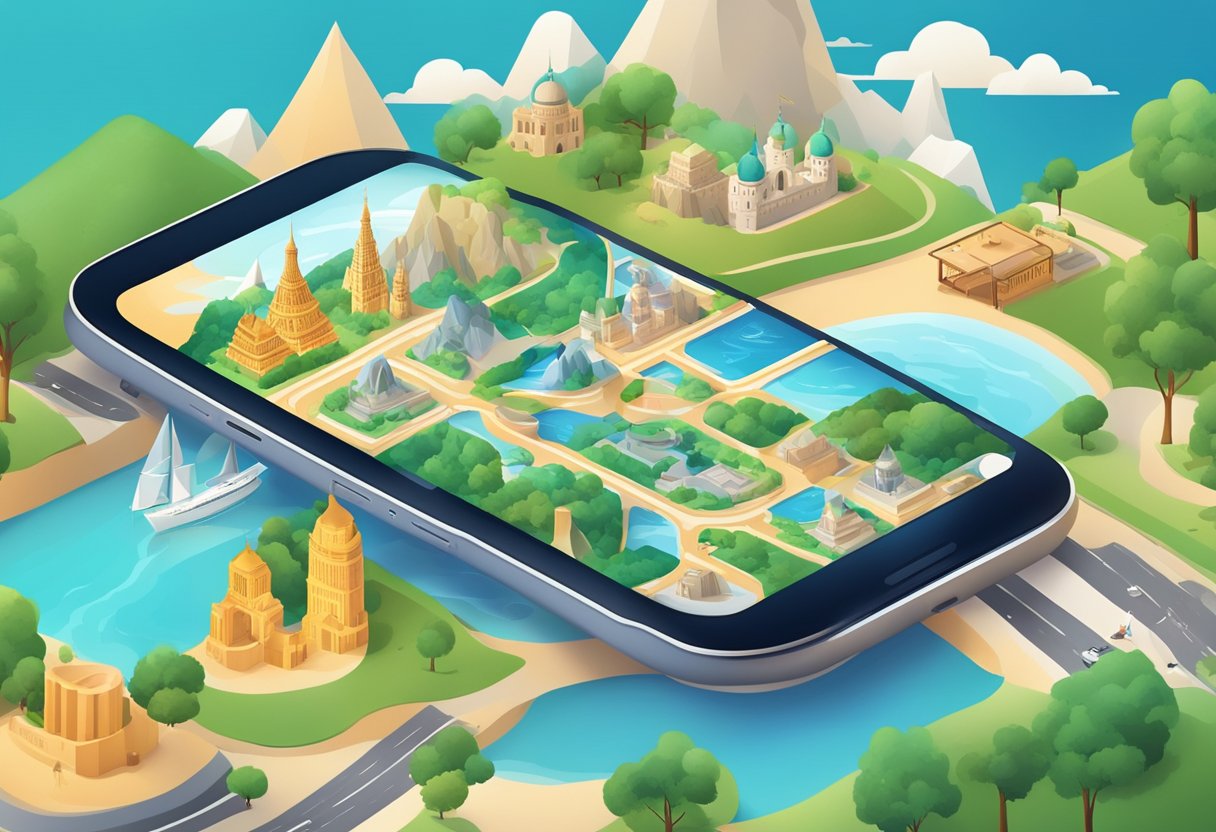React Native has revolutionized the mobile app development industry by providing a platform to build cross-platform applications. With its ability to develop apps for both iOS and Android platforms, React Native has become a popular choice for developing travel and tourism apps. The travel industry has been transformed by technology, and mobile apps have become an essential tool for travelers to plan and manage their trips.

Building travel and tourism apps with React Native can provide immersive experiences for travelers. These apps can offer features such as real-time flight and hotel booking, itinerary planning, and personalized recommendations based on the traveler’s preferences. With the use of location-based services, these apps can also provide information about nearby attractions, restaurants, and events. This makes it easier for travelers to explore new places and make the most of their trip.
Índice De Conteúdo
Fundamentals of React Native for Travel Apps
React Native is a popular framework for building mobile applications that allows developers to use JavaScript and React to create native apps for both iOS and Android platforms. In the context of travel apps, React Native provides a powerful toolset for creating immersive and engaging experiences for users.
Setting Up the Development Environment
Before starting to build a travel app with React Native, developers need to set up their development environment. This involves installing the necessary software, such as Node.js and the React Native CLI, and configuring their development environment to work with their chosen platform.
Understanding React Native Core Concepts
React Native is built on top of React, a JavaScript library for building user interfaces. As such, developers working with React Native need to have a solid understanding of React’s core concepts, such as components, state, and props.
In addition, React Native introduces its own set of core concepts, such as the use of native components and the use of Flexbox for layout. Developers need to be familiar with these concepts in order to build effective and performant travel apps.
Designing for Different Devices and Platforms
One of the key benefits of React Native is its ability to create apps that work seamlessly across different devices and platforms. However, this requires developers to design their apps with this in mind, taking into account the different screen sizes, resolutions, and input methods of different devices.
Developers can use responsive design techniques, such as Flexbox and media queries, to ensure that their apps look and function correctly on different devices. They can also use platform-specific components and APIs to provide a native look and feel on each platform.
In conclusion, understanding the fundamentals of React Native is essential for building effective travel apps. By setting up the development environment, understanding core concepts, and designing for different devices and platforms, developers can create immersive and engaging travel experiences for their users.
Creating Immersive Travel Experiences
React Native makes it easy for developers to create immersive travel experiences that engage users and provide them with a seamless travel experience. By leveraging the capabilities of mobile devices, integrating maps and location services, personalizing user experiences, and implementing booking and payment features, developers can create travel apps that provide users with a truly immersive experience.
Leveraging Device Capabilities
React Native provides developers with access to a wide range of device capabilities, including the camera, accelerometer, and gyroscope. By leveraging these capabilities, developers can create immersive travel experiences that allow users to explore their surroundings in new and exciting ways.
For example, developers can create augmented reality experiences that allow users to explore their surroundings and learn more about their destination. By using the camera and location services, developers can create an immersive experience that provides users with information about nearby landmarks, restaurants, and other points of interest.
Integrating Maps and Location Services
Maps and location services are essential for any travel app. By integrating maps and location services into a travel app, developers can provide users with real-time information about their surroundings and help them navigate unfamiliar locations.
React Native provides developers with access to a range of mapping and location services, including Google Maps and Mapbox. By integrating these services into a travel app, developers can create an immersive experience that allows users to explore their surroundings and navigate with ease.
Personalizing User Experiences
Personalization is key to creating an immersive travel experience. By personalizing the user experience, developers can create an app that is tailored to the needs and preferences of each user.
For example, developers can use machine learning algorithms to analyze user data and provide personalized recommendations for restaurants, activities, and other points of interest. By tailoring the experience to each user, developers can create an app that feels like a personal travel guide.
Implementing Booking and Payment Features
Finally, developers can create an immersive travel experience by implementing booking and payment features. By allowing users to book flights, hotels, and activities directly within the app, developers can create a seamless travel experience that eliminates the need for users to switch between multiple apps.
React Native provides developers with access to a range of payment and booking APIs, including Stripe and PayPal. By integrating these APIs into a travel app, developers can create a seamless booking and payment experience that makes it easy for users to plan and book their trips.

